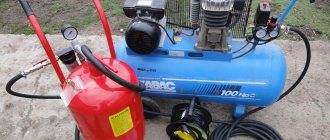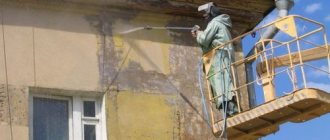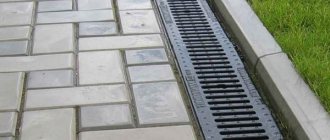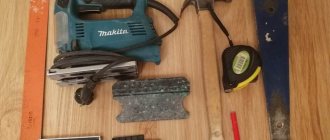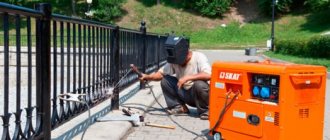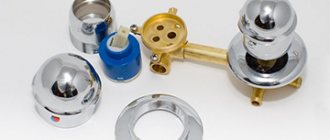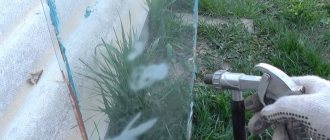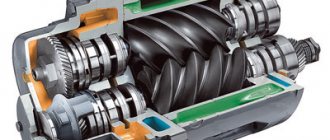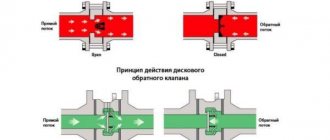The compressor used to equip the sandblasting machine is the most important element, the correct choice of which largely determines the efficiency of the entire system. The technical characteristics of this device also have a direct impact on the performance of the processing performed and on such an important parameter as the consumption of abrasive material.
A sandblasting unit and a compressor are two essential components of one metalworking system
Compressor selection
The sandblasting compressor is the most expensive device among all the elements of the system used to perform such a task. When equipping a device for sandblasting, many, guided by a natural desire to save money, purchase the cheapest compressors, the technical characteristics of which do not meet the required parameters.
The use of a compressor, the technical parameters of which do not correspond to the characteristics of the sandblasting machine used, leads to the fact that the speed of processing is significantly reduced, the consumption of abrasive material per unit of surface area processed increases, as a result, the deadlines for completing the work are missed and their cost increases.
That is why specialists, when choosing a compressor for sandblasting, evaluate not only the volume of work to be carried out, but also the deadlines that must be met. To select a compressor, special tables are most often used, which show the ratios of such parameters as:
- the pressure that the compressor is capable of providing;
- level of compressed air consumption by a sandblasting machine;
- consumption of abrasive material per unit area of the surface being treated;
- speed of processing.
Abrasive, air consumption and productivity
The data on the consumption of abrasive material, which are indicated in such tables, are indicative for the reason that the value of this parameter is influenced by many factors. Such factors, in particular, are: the type of surface being treated, the nature and thickness of the layer of dirt or old coating being cleaned, the height to which it is necessary to raise the abrasive mixture, the experience and qualifications of the work performer. Despite the not very high accuracy of this parameter given in the tables, they give an idea of which compressor to choose.
Types of sandblasting, surface cleaning
There are several types of cleaning:
- Easy. This type involves surface cleaning, that is, removing pockets of corrosion or traces of old paintwork. The effectiveness can be compared to using a wire brush. After the procedure, no traces of contamination should remain.
- Average. Is a more thorough processing. After cleaning is completed, small traces of corrosion may remain, but their area should not exceed 10% of the total area of the workpiece.
- Deep. Removes absolutely all traces of any type of dirt. The treated surface must be completely clean. At the same time, the consumption of abrasive increases several times.
Important parameters
If we evaluate the importance of two main characteristics of any compressor: performance, measured in the volume of air supplied per unit of time, and the pressure under which such air is supplied to the sandblaster nozzle, then we can conclude that they are both important.
If we talk about compressor performance, which can be measured in units such as liter/min and m3/min, then it should be noted that this parameter affects the speed of processing and the quality of the working mixture consisting of abrasive material and air. Compressor equipment, characterized by high performance, makes it possible to use nozzles with holes of larger diameter, thereby increasing the diameter of the treatment spot and, accordingly, the speed of its implementation. Most models of modern sandblasting machines operating on the pressure principle require compressors capable of providing productivity in the range of 2.2–17 m3/min.
Compressor performance calculation
The choice of a compressor based on the pressure it can provide depends primarily on the characteristics of the surface being treated. Thus, to perform effective sandblasting of structures made of concrete, brick and natural stone, you need a compressor that can provide a pressure of about 3-5 bar, and for high-quality cleaning of metal surfaces - 5-8 bar. Higher pressure (about 9–12 bar) is required in cases where it is necessary to remove a thick layer of old coating or material that is highly abrasive from the surface being treated. A compressor capable of providing such pressure will also be required if the abrasive mixture needs to be supplied over a significant distance: over 60 meters.
When a sandblasting machine operates, the main part of the pressure is lost not in the hose supplying compressed air from the compressor, but in the hose through which abrasive material is supplied from the container. That is why, if it is necessary to perform sandblasting work at a considerable distance from the compressor unit, this distance must be covered by the length of the air hose, and the hose for supplying the abrasive material should be kept to a minimum length.
Advantages and disadvantages
In most cases, a cooler is sufficient to clean the air from condensation, but sometimes special refrigeration systems are used. When working on the road, the question often arises: what type of compressors should I give preference to, diesel or electric?
Both the first and the second have several positive and negative features that should be taken into account when choosing equipment.
One of the indisputable advantages of diesel engines is autonomy. You are absolutely not tied to power sources. Plus, most of these compressors have a built-in automatic engine speed control system, which allows you to save fuel while reducing air consumption. A similar system for electric compressors is much more expensive. However, the cost of fuel is quite high. In this regard, diesel compressors should be used exclusively in cases where there is no access to an industrial power supply network.
Screw or piston compressor unit?
Piston compressors, which supply compressed air to the system with significant surges, are rarely used to complete sandblasting machines. Due to such jumps, the abrasive material mixes unevenly with the air flow, forming numerous lumps that not only reduce the pressure of the abrasive jet, but also clog the nozzle of the device. You can eliminate pulsations of air pressure in the system when using a piston compressor if you include a receiver in the system and select a compressor unit that can provide greater pressure than is required for the operation of a sandblasting machine. Another disadvantage of such compressors, which in case of urgent need can be used to perform short-term sandblasting work, is that they are characterized by a significant removal of compressor oil.
When choosing a compressor, consider the average service life, depending on the type of equipment
Screw-type compressor units, mainly used to complete sandblasting machines, do not have all such disadvantages. Such installations, which are economical to use and maintain, are capable of providing the sandblasting machine with compressed air for a long period of time, the pressure level of which remains stable.
Working principle of a sandblasting gun
Typical design elements of an injection type device are:
- Body with handle.
- Nozzle.
- Fitting for compressed air supply (in some designs an additional control valve is installed on the fitting).
- An internal air nozzle with an injection profile in the form of a truncated cone, the diameter of which narrows along the air flow.
- A control sleeve that provides adjustment of the current abrasive flow rate.
- A union nut or pin for attaching the internal nozzle to the body, which eliminates possible leaks of the cleaning mixture.
- Threaded bushing for connecting a tank or other container containing abrasive.
Some designs have a separate abrasive mixture dispensing unit, which is attached to the gun instead of a threaded bushing.
A sandblasting gun for an injection-type compressor functions like this. A nozzle for a sandblasting machine is mounted on the body, the diameter of which must be strictly selected with the pressure developed at the outlet of the compressor and with the diameter of the internal (air nozzle). A tank or hose is attached to the handle. Since abrasive dust easily penetrates into the lungs, the operator must work in a respirator. After this, the compressor is turned on, and the air flow pressure is adjusted using the control sleeve. To do this, you can use the following practical relationships:
- For nozzle diameters of 6 and 2 mm, respectively, the air flow should be in the range of 0.2...0.3 m 3 /min;
- For 8 and 3 mm – 0.3…0.6 m 3 /min;
- For 10 and 4 mm – 0.6…1.2 m 3 /min;
- For 12 and 6 mm – 0.9…1.8 m 3 /min.
Lower flow rates correspond to lower compressed air pressures (and smaller distances from the outlet end of the nozzle along the surface being processed).
The duration of work and the intensity of supply of the abrasive-air mixture are established experimentally depending on the adhesion strength of foreign particles to the base metal and the quality of the surface pre-treatment: it must be cleaned of dust and easily removable contaminants.
During the cleaning process, the gun is positioned at an angle of approximately 45° relative to the surface: in this case, the removal of contaminant particles will be most effective.
Diesel or electric compressor?
Sandblasting machines today can be equipped with compressor units driven by electric or diesel engines. Which of these compressors to choose depends on a number of factors. It is clear that it will not be possible to use an electric compressor if there is no possibility of connecting to the electrical network. Meanwhile, autonomy and mobility are not the only advantages of diesel compressors.
A modern diesel compressor is a powerful unit equipped with various systems that ensure efficient operation with any tool.
Most modern models of such devices are equipped with an effective system for adjusting their performance, which works on the following principle: at the moment when the consumption of compressed air by the sandblasting machine decreases, such a system automatically reduces the speed of the installation’s drive engine; Accordingly, when compressed air consumption increases, engine speed also increases. Similar systems can also be installed on electric compressors, but due to the design features of such devices they are much more expensive.
The advantages of electric compressors include the simplicity of their design; they are more economical to operate and maintain. Among such compressors on the modern market there are both stationary and mobile models, transported using a special chassis with which they are equipped. A limitation for the use of electrical installations is also that for the sandblaster to operate effectively, a compressor is required, the engine of which has a power in the range of 22–100 kW. Not every electrical network can withstand connecting such a motor.
Compressors operating from a 220-volt network are practically never equipped with motors more powerful than 3 kW
If you choose which compressor to purchase, taking into account the economic component of its use, the choice of electrical devices will be more preferable.
Sandblasting machine. Types and work. Application and how to choose
The sandblasting method has existed for many years and is used in industry, furniture production and even in everyday life. Using sandblasting equipment, you can solve a very wide range of tasks: from cleaning surfaces from rust to engraving on glass. For different types of work, the sandblasting machine is equipped differently and has different sizes, but the structure and principle of operation remain unchanged. Moreover, they are so simple that even a beginner can cope with the installation.
Where are sandblasting used?
The sandblasting machine is used where there is a need to treat surfaces with abrasive. With its help, you can effectively clean even the most difficult to reach places. This treatment perfectly prepares surfaces for applying any type of coating.
Therefore, the scope of use of sandblasting is very extensive:
- The devices are widely used at car service and body repair stations.
- They are used to polish wood products.
- Indispensable in furniture production, for example, for frosting glass or engraving.
- They are used for cleaning the walls of buildings, the bottoms of ships, etc.
Recommendations for operating compressors in winter conditions
Those who are going to use a compressor as part of a sandblasting system should definitely know how to avoid the formation and concentration of moisture-oil condensate in the lines, which not only reduces the performance of the device, but can also lead to its complete stop. The presence of such condensate in the supply lines leads to the wetting of the abrasive material, its sticking and the formation of lumps, and if metal shot is used as such material, then the condensate contributes to its corrosion and, as a result, to a decrease in its quality characteristics. Compressor oil, which is also present in the condensate, if it gets on the surface being treated, negatively affects the quality of the cleaning performed.
When operating the compressor in winter, replace the “summer” oil with oil with a pour point of at least 25 degrees
In order to remove already formed condensate from the system, special moisture-oil separators are used, operating on the principle of a cyclone separator, but they are unable to stop the process of its formation. To solve this problem, various devices can be used in sandblasting systems, the most common of which include:
- compressed air coolers;
- coalescent filters;
- refrigerated dryers.
You can make a moisture separator yourself, for example, from an oil filter from a Volgov engine
When operating compressor units at low temperatures (from minus 5 degrees), they must be additionally equipped with pre-heaters and “cold start” systems. Naturally, the oil used in compressors in such cases must also be designed for winter operation.
Personal protection for sandblaster
When working with sandblasting machines, special attention is paid to the individual protection of the sandblaster. This type of material processing poses several dangers to human health.
The first of them is grains of sand flying out at very high speeds, which can reach 700 kilometers per hour. Many particles ricochet off the surface being treated, which can cause serious injury to the skin. To protect yourself from their effects, you must use the following personal protective equipment:
- special shoes;
- overalls made of durable material;
- leather gloves;
- protective helmet.
Sand dust and other particles knocked off the surface being treated have a negative effect on the respiratory system. To protect against this harm, the sandblasting helmet is equipped with an independent air source. Air usually comes from outside the work shop and is forced into the helmet for breathing. Sometimes self-contained air supply systems are used, similar to those used by scuba divers.
Used compressor equipment
When deciding what compressor equipment to buy in order to spend less money, many decide to buy a unit that has already been used. Acting in this way, you should take a very responsible approach to choosing equipment so as not to end up in a situation where you have to constantly repair your compressor installation. It should also be borne in mind that a compressor that has already been operating for some time is not capable of providing the characteristics specified in the data sheet for new equipment. This state of affairs is due to the fact that any equipment used is subject to natural wear and tear, which certainly does not affect its efficiency in the best way.
The advantage of buying a used compressor is the ability to purchase a more powerful unit for little money.
Used compressors, in addition, are characterized by increased fuel consumption, which leads to an increase in the cost of sandblasting work. One should not discount the fact that such equipment may fail at any time, which will lead not only to additional costs for its repair, but also to delays in completing work, and this is very critical in many situations. The average normal life of compressor equipment is 7–10 years, so purchasing a compressor that has already worked for such a period of time is simply not practical.
Homemade compressors
For those who like to do something with their own hands and want to save a lot on purchasing a commercial compressor, there is a good option: make a homemade device that will allow you to effectively perform simple sandblasting at home.
Compressor circuit
As the main element of a homemade device for producing compressed air, which will determine its technical characteristics, you can use ready-made compressors from the pneumatic brake drive of old MAZ and ZIL cars (130–157). Such compressors are also available in equipment from the MTZ and GAZ brands, but they are low-performance, and the devices from KAMAZ vehicles require significant modification. As a receiver that will need to be installed on such a device, you can use a regular gas cylinder with a capacity of 50 liters. An electric motor of both 220 and 380 V is suitable to drive the compressor head.
With your own hands, for such a homemade compressor, you only need to make a frame on which all the component elements of the device are assembled into a single structure.
More on the topic: > Do-it-yourself sandblasting: drawings, videos, manufacturing instructions > Sandblasting nozzle: rules for choosing and making it yourself > Sandblasting from Karcher: nozzle for a high-pressure washer
